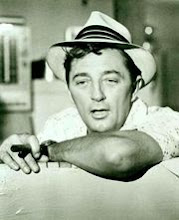US Seeks to Destabilize Andean Region
Jason Paz
Normally,
President Bush lauds the killing of 13 guerrillas and two FARC leaders as a victory in the War on Terror. Body searches at the scene have ‘revealed’ a relationship between Chavez and FARC: $300 millions and depleted uranium. How convenient this is for Americans who want to seize Venezuelan oil assets in time of war!
There is nothing to stop Bush from declaring Martial Law and putting NSPD 51 in force.
I hope someone will explain to me why this sorry eventuality is impossible.
In the meantime, Mr Gott examines the political ramifications of recent events. Although I agree with him in every regard, I alone am responsible for my words and opinions above.
For FARC's Sake:
Richard Gott, Alternet
Originally appeared on Free to Comment
The deaths of Raúl Reyes and Julián Conrado, two senior figures in the Revolutionary Armed Forces of Colombia (FARC), are clearly a serious blow to the guerrilla organization. It will now call a halt to the release of hostages held by the FARC in the jungle over many years, a process that had been proceeding slowly under the auspices of the Venezuelan president, Hugo Chávez. Freedom in the short term for the former presidential candidate Ingrid Betancourt, in which the French president Nicolas Sarkozy has taken a personal interest, now seems unlikely, and many people believe that she is dying. Hopes of the imminent release of three
By all accounts, the midnight attack on the camp of the FARC leaders, a mile inside Ecuadorean territory in the jungle region south of the
According to the Ecuadorean president, Rafael Correa, the bodies of the FARC commanders and 13 guerrillas were recovered in their pajamas after being bombed while sleeping in a tent on the Ecuadorean side of the frontier. The Colombian air force, Correa claimed, had used advanced technology "with the collaboration of foreign powers" to locate the camp and "to massacre" its occupants. Uribe's government is a close ally of the
Ever since 9/11, the
The FARC has witnessed many changes over the past 40 years, but none of them has affected its ability to survive. One change has been the increasing production in
Another change has been the growth of paramilitary organizations, first sponsored by the drug barons and then by the state, that have revived the pattern of civil war that has been a particular Colombian phenomenon since the 19th century. Coupled with the growth of the paramilitaries has been the U.S.-designed Plan Colombia, a military aid package first agreed with President Clinton in 1999, that has made
A third change has been the collapse of the
Negotiations between the guerrillas and the government have been a feature of the past 25 years, but an unfortunate experience in the 1980s turned the FARC into a reluctant participant. After a ceasefire in 1984, the FARC was encouraged to establish a legal political party, the Patriotic Union, and to put forward candidates in the elections in 1985. The Patriotic Union was reasonably successful, securing six senators, 23 deputies, and several hundred local councillors. But the outcome was disastrous. After emerging into the open and putting their heads above the parapet, many of the UP supporters were singled out and killed. More than 4,000 left-wing activists and organizers were assassinated in the year after the elections. The guerrillas retired to their safe territories in the rural areas and vowed not to make the same mistake again. Further negotiations took place between 1999 and 2002, but the government negotiators could not overcome this legacy of mistrust on the part of the FARC. When Uribe became president in 2002, he abandoned all such efforts and embarked on seeking an entirely military solution.
Last year, Uribe came under considerable pressure from within
He is now getting more than he bargained for. Chávez has indicated his own personal disgust with the Colombian action by closing the Venezuelan embassy in


No comments:
Post a Comment